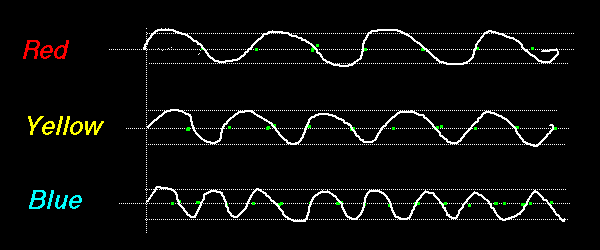The spectrum of electromagnetic radiation
What we see with our eyes is electromagnetic radiation, which
is a kind of a wave that can travel through space.
We can see a range of colors of light.
- red
- yellow
- green
- blue
- violet
The difference between colors is the wavelength of the waves.

The range of available wavelengths is called the spectrum .
We can see only a small part of the full spectrum of electromagnetic
radiation. (See information about units.)
- radio (> 10 cm)
- microwave (1 cm)
- infrared ( 10-5 m)
- visible ( 500 nm = 5 x 10-7 m)
- red (700 nm)
- yellow
- green
- blue
- violet (400 nm)
- ultraviolet ( 10-7 m)
- xrays ( 10-10 m)
- gamma rays (< 10-11 m)
We can, however, detect all of the above. For astronomy, we need all the
information we can get, so we use all wavelengths.
Most these are useful in daily life:
- radio: transmission of radio and television signals.
- microwave: radar, cooking.
- infrared: heating, remote controls for couch potatoes,
images with special cameras.
- visible: our ordinary main way to get information about the world.
- ultraviolet: special effects with fluorescent materials, skin tanning (beware!).
- xrays: images of parts inside our bodies.
- gamma rays: useful in science, but I don't know of any "practical"
uses.
ASTR 122 course home page
Updated 1 October 2007
Davison E. Soper, Institute of Theoretical Science,
University of Oregon, Eugene OR 97403 USA
